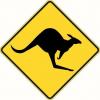Ken, have you tried placing your chisels under a pyramid? Chanting is optional.

Yes, there are no short cuts. I don’t buy into “I just know when it’s sharp ... I can feel it in my waters”.
Experienced sharpeners recognise two factors: the first is that sharp requires that there is no light or roundedness at the very edge of the blade. A wire lets you know when the primary face has reached the back side. No sharp without this. To achieve this efficiently, always start the process with the coarsest stone. There is a balance to be achieved here: too coarse and you create deeper scratches which then require extra effort to remove.
The second factor is that you need to end the process with the smoothest possible surface. Smoother = sharper. As with grinding, ‘polishing’ is a compromise of cost/effort vs result. There is a point of diminishing returns. That is a personal decision.
When starting on the back of a new blade (other than a Veritas or LN), such as the Stan Chisels, I would run it over a finer media to see if there are high/low spots. Then I would choose the media coarseness to suit how much steel needs to be removed. Diamond plates are good here.
I would estimate that about 75% of the time is spent on the coarsest stone. Do not jump stones as you will wind up returning and re-doing the work.
How do I know when the blade is ready? Most importantly, I went through the complete routine, beginning with the most important stage, the first stage ... creating a wire edge. I always feel for this. Then I move on until all scratches cannot be seen, and through every media used feel for the wire. It should get smaller and smaller. Finally, a rub on green compound/hardwood to ensure that the wire is gone. Knowing that this has been done gives me the confidence that the edge is sharp.
Regards from Perth
Derek





 )! It's always the middle finger on my left hand for me. I'm down to one item left in the 'shed' (other than bicycles, but the rats don't seem to care about them.. and they're hanging anyway). Unfortunately it's the box they're living in it seems. I'm not really looking forward to moving it and having a family of rats fight back, so last night I helped a friend replace brakes on his truck. Seemed a more sane thing to do, while I contemplate chemical warfare. If you hear about someone on the NW side using chlorine gas, it's probably me.
)! It's always the middle finger on my left hand for me. I'm down to one item left in the 'shed' (other than bicycles, but the rats don't seem to care about them.. and they're hanging anyway). Unfortunately it's the box they're living in it seems. I'm not really looking forward to moving it and having a family of rats fight back, so last night I helped a friend replace brakes on his truck. Seemed a more sane thing to do, while I contemplate chemical warfare. If you hear about someone on the NW side using chlorine gas, it's probably me. 
 Reply With Quote
Reply With Quote





 .
.
